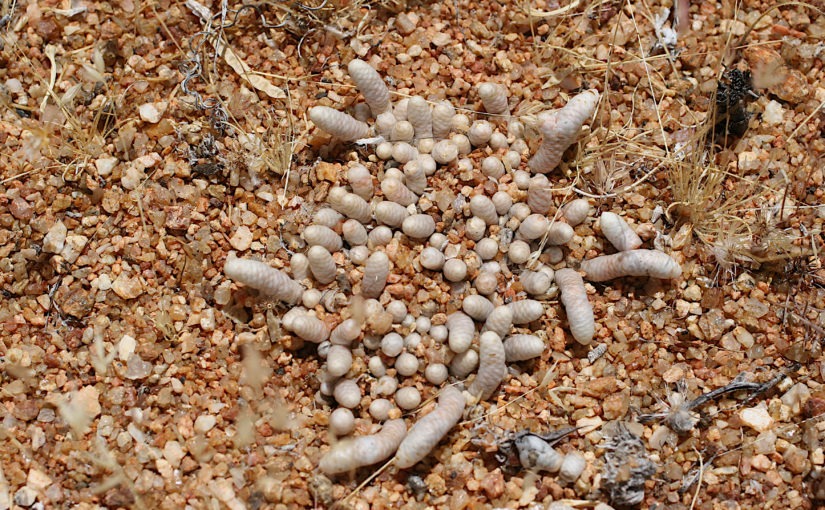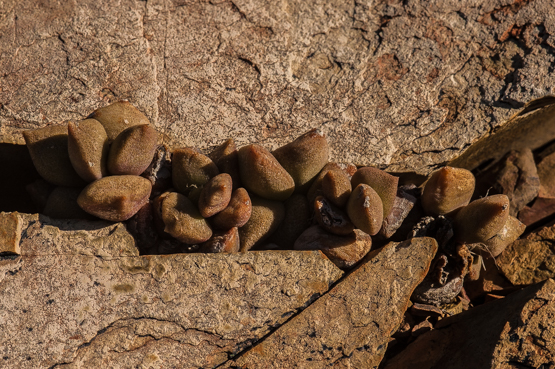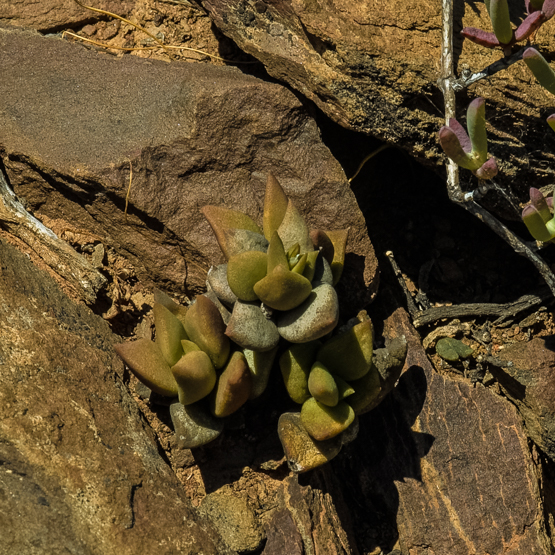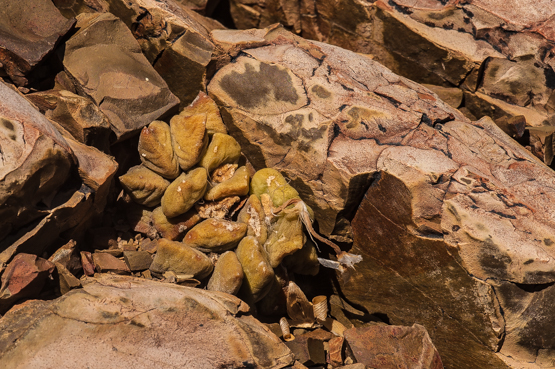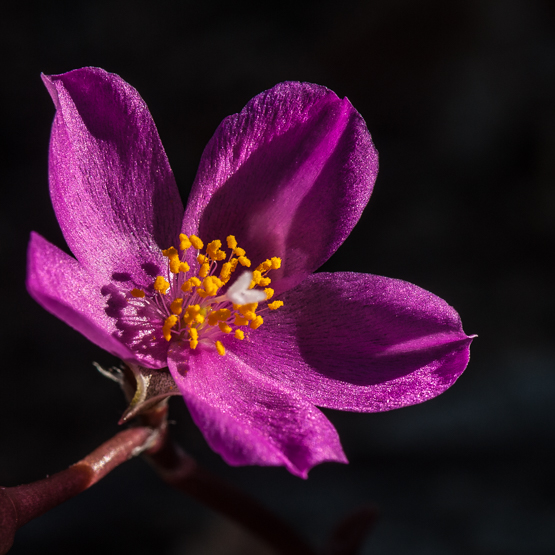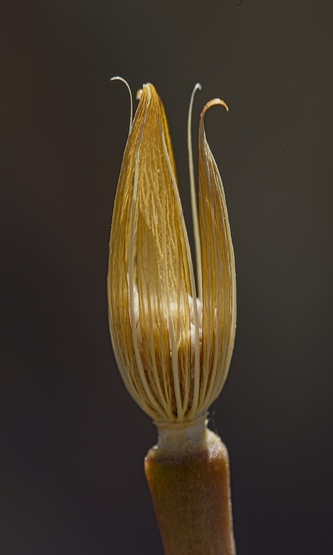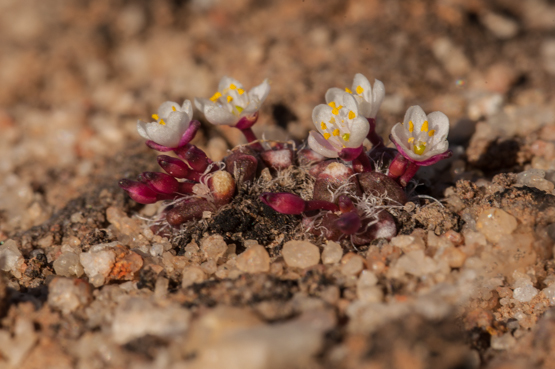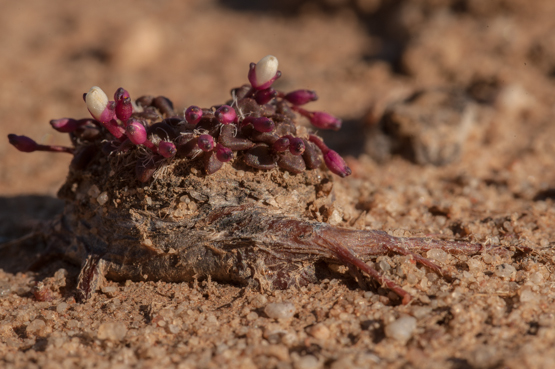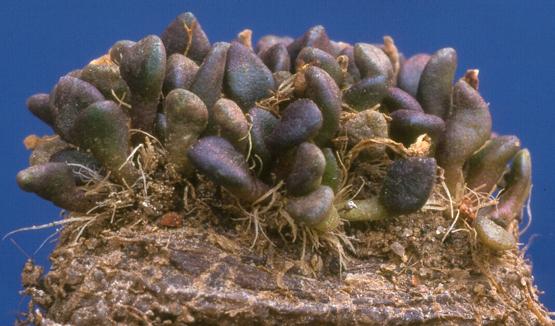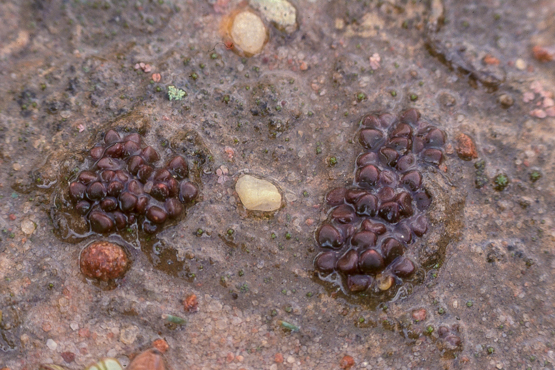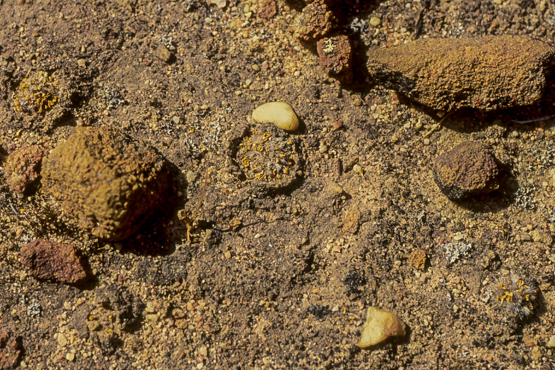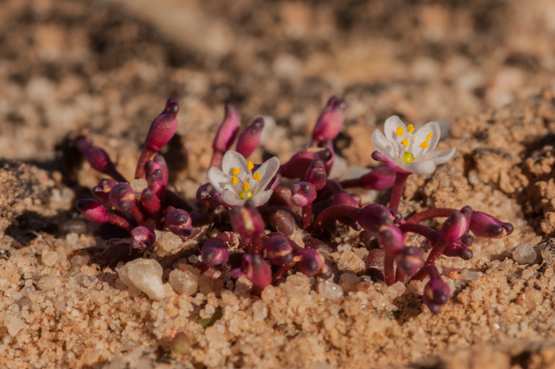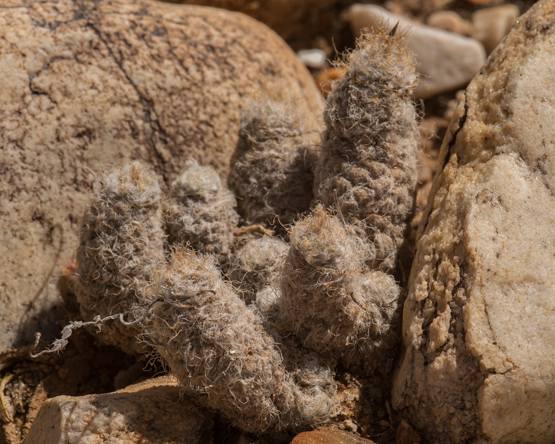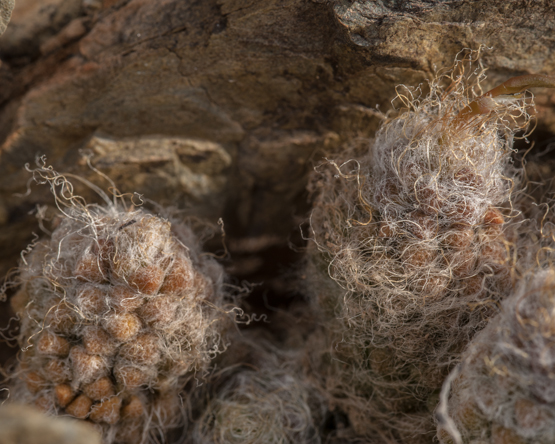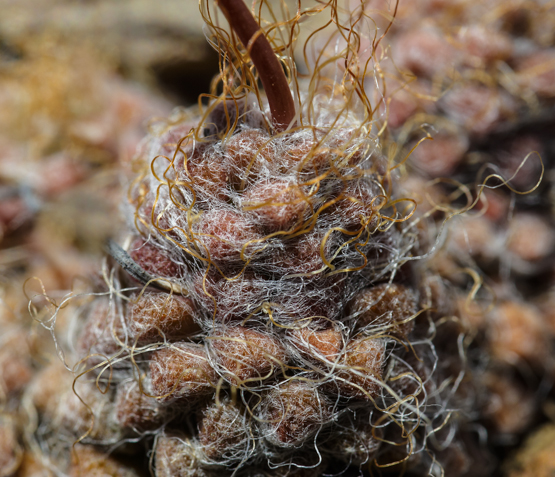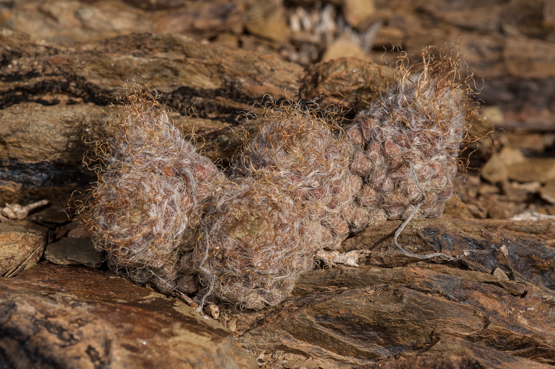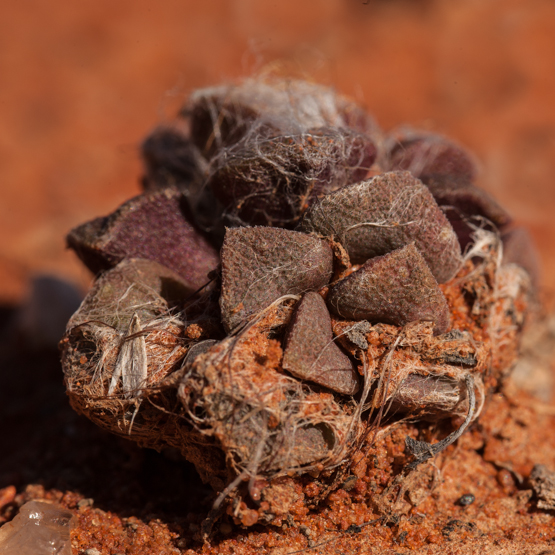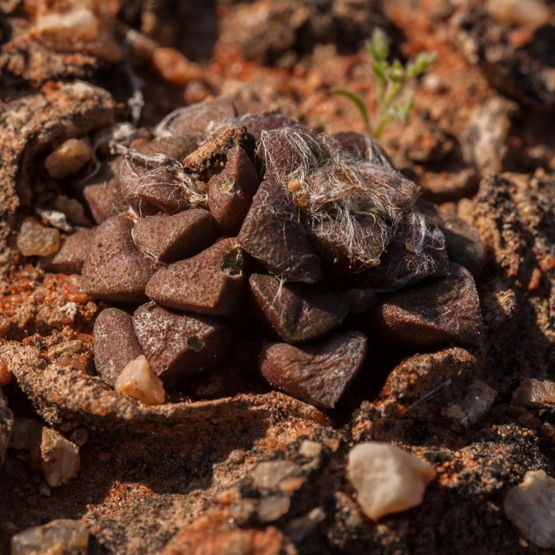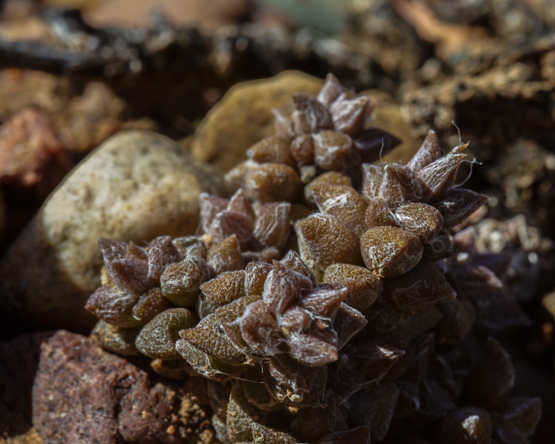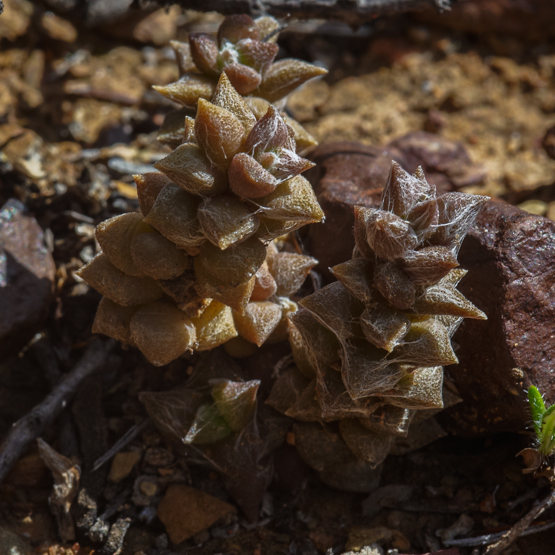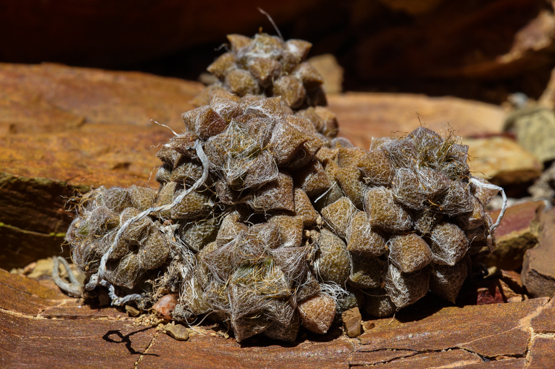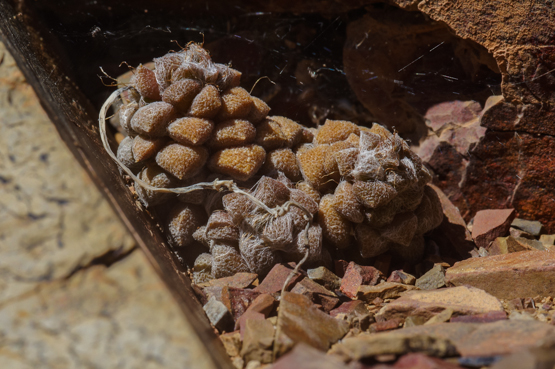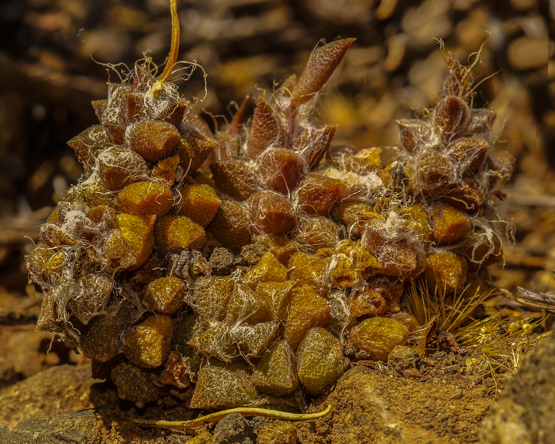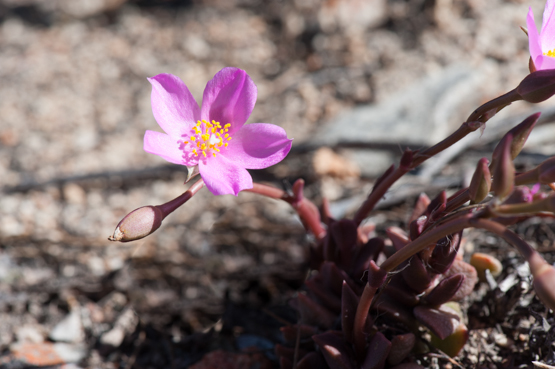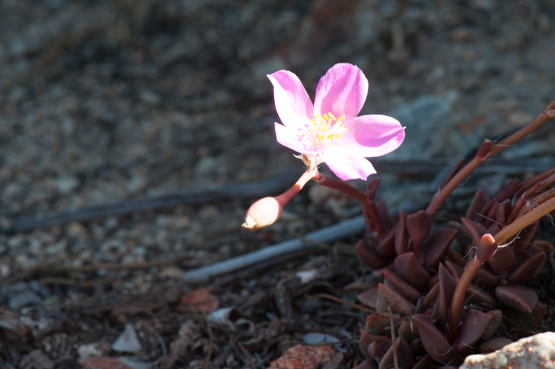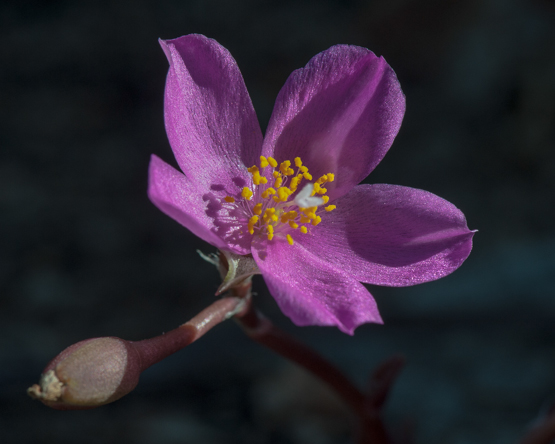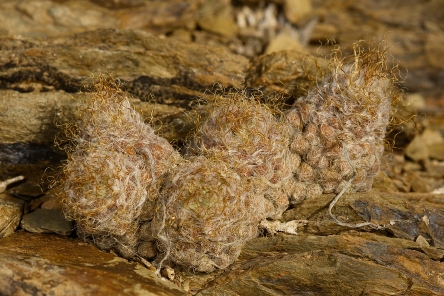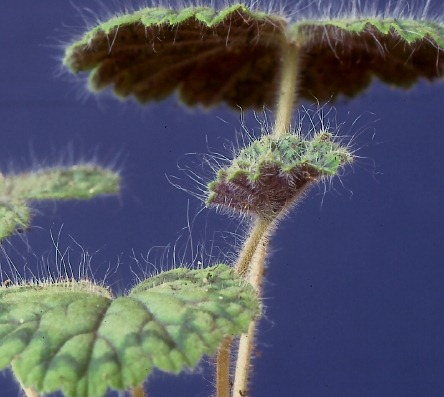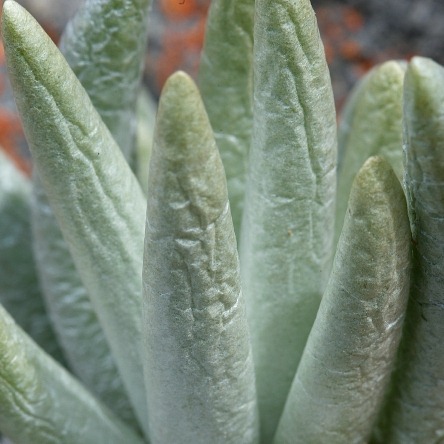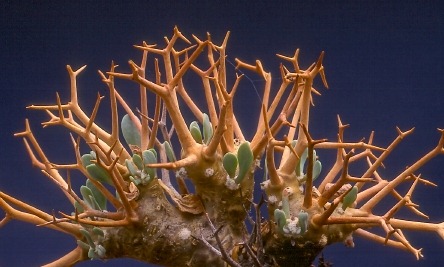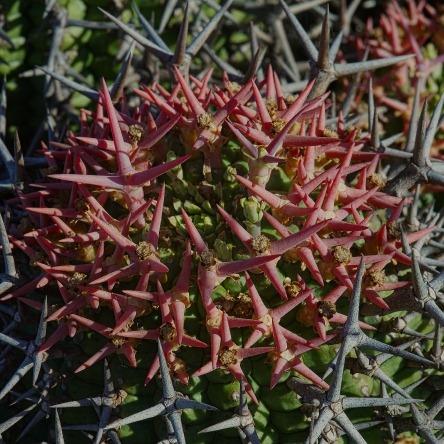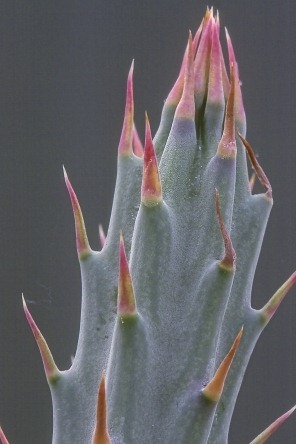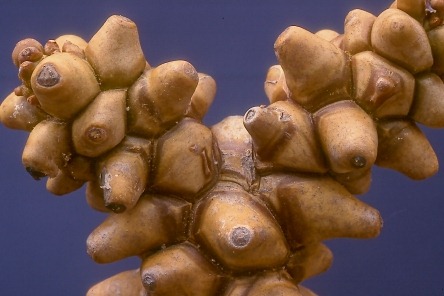A contribution by Theo Heijnsdijk
Taxonomy
Avonia used to be a subgenus of Anacampseros, a relatively small genus in the family of purslanes (Portulacaceae).
The species within the genus Anacampseros consist of small to very small shrublets with a more or less thick, sometimes branched stem. The fleshy leaves form a flat rosette or are attached to the stem in a spiral. A typical characteristic are the stipules (lateral outgrowths at the base of the leafstalks). Often these have been reduced to hairs, or grown into parchment-like white scales which in some species can completely cover the stem including the real leaves. In 1994 Gordon Rowley concluded that these species with scale-shaped stipules deserve the status of a separate genus; thus the genus Avonia came into existence. In it, he placed 9 species. There are now 12. The name is probably derived from the Latin ‘Avus’ which means grandfather. It would then refer to the white scales that give the plants an ‘old’ appearance. Rowley placed a few other Anacampseros-like plants in the genus Grahamia. According to his classification, 15 species remain in the genus Anacampseros.
Together, the genera Anacampseros, Avonia, and Grahamia form the branch (tribe) Anacampseroteae within the Portulacaceae.
Incidentally, it is doubtful whether the genus Avonia will hold. It is rather unusual today to base a genus on a similarity in its external appearance. As a rule, the characteristics of the flower and seed and even more so the similarities and differences in DNA play a decisive role.
Flower and fruit
What all representatives of the Anacampseroteae have in common is the construction of flowers and fruit. The flowers, which in all species are only open for a few hours in the late afternoon, always have only 2 sepals, which first completely enclose the flower and often curl up after flowering but remain joined at the tip so that they stay on top of the developing fruit like a cap. This can be seen very well in Avonia quinaria ssp. alstonii (fig.1). At a certain moment the cap falls off and the seeds are released.
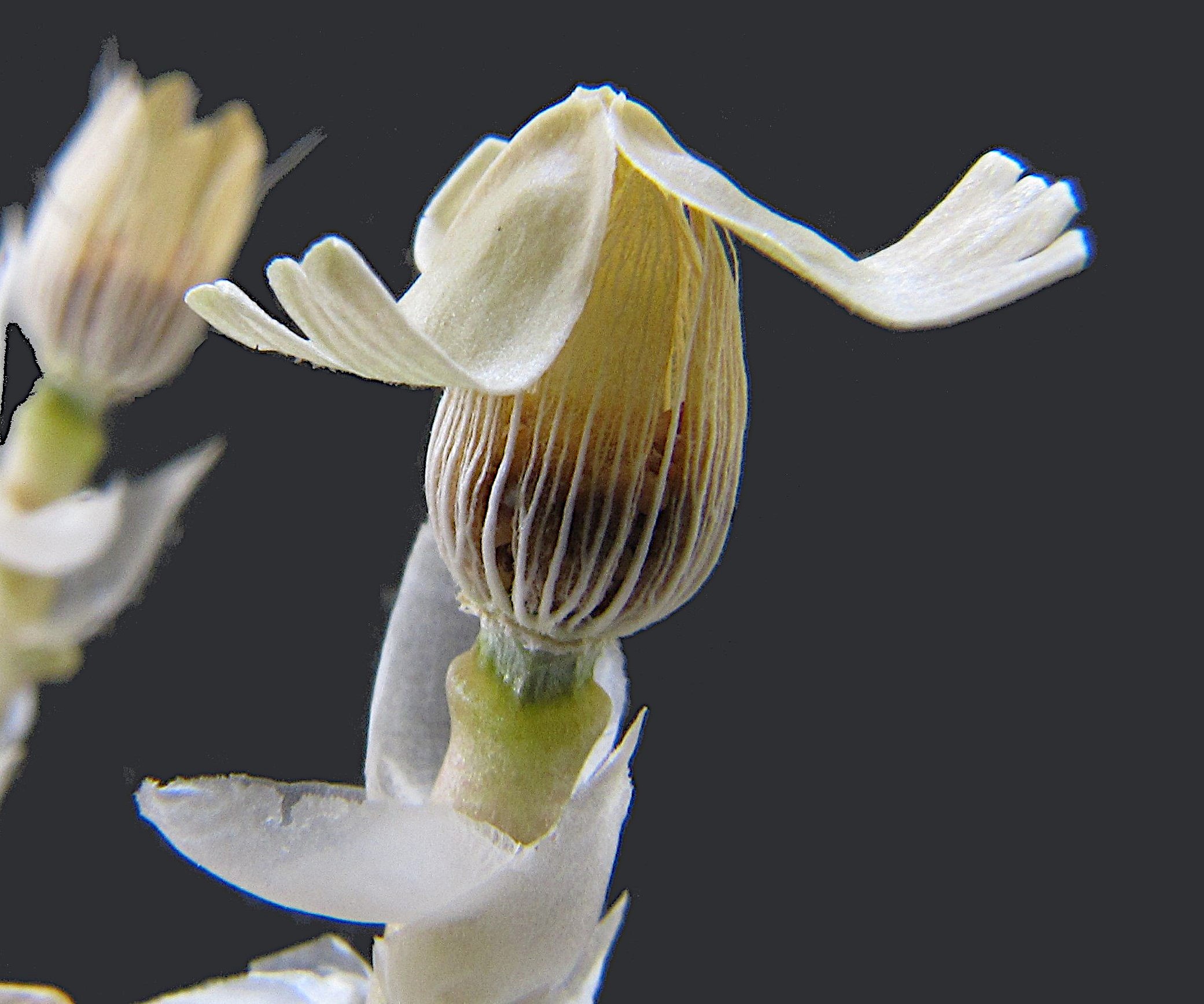
Fig. 1
Furthermore, there are usually 5 (sometimes 4) petals , which are white, pink or carmine. The stamens are white with yellow anthers and very variable in number: from 5 in, for example, Anacampseros comptonii to as much as 80 in A. quinaria (fig. 2). The white pistil has 3 lobes. The fruit consists of a kind of veined basket that often has a narrow opening at the top, so that the seeds come out in dribs and drabs as if with a salt-sprinkler as the flower stem bends to the ground and is moved up and down by the wind.
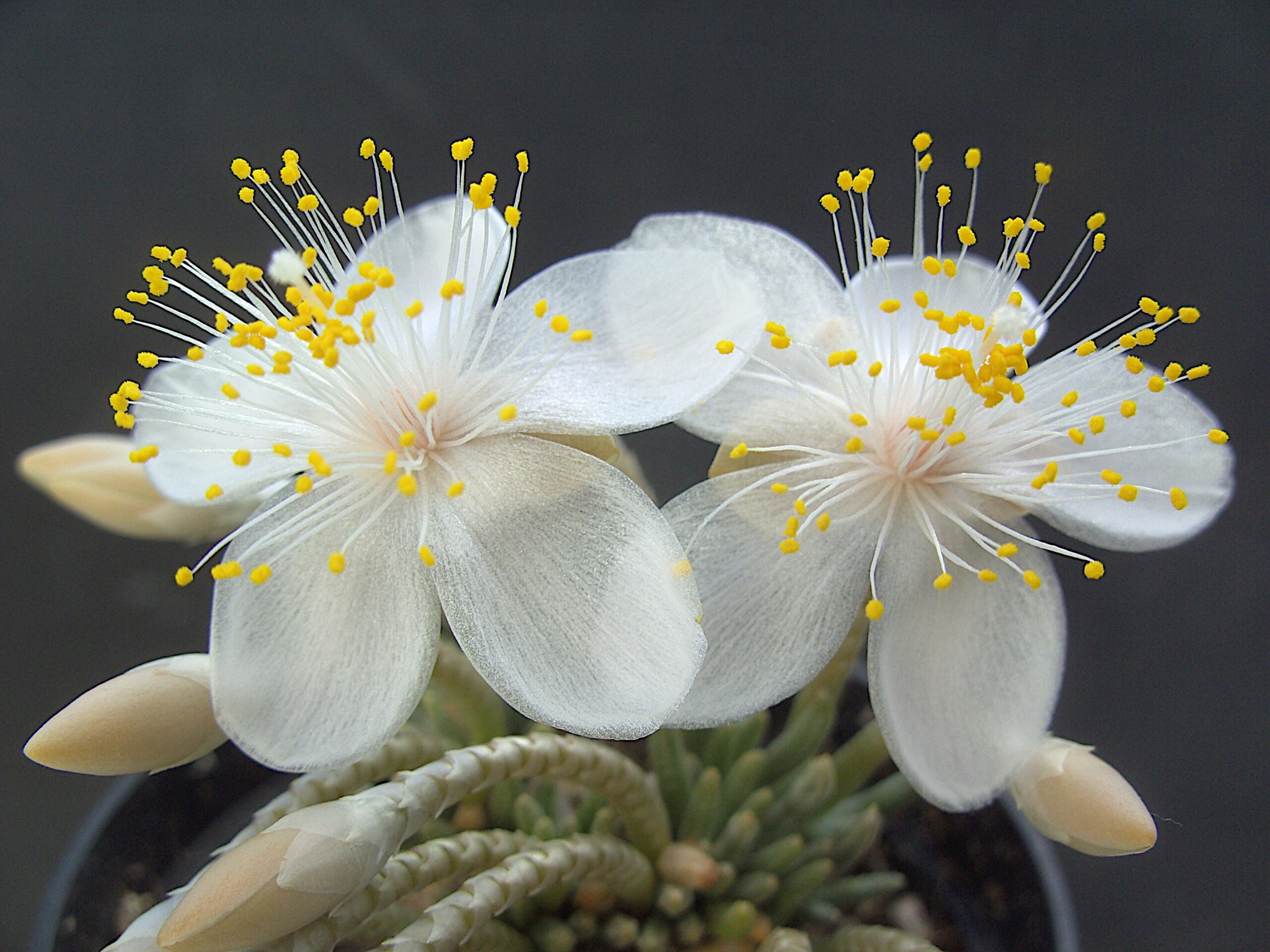 fig. 2
fig. 2
A. papyracea was chosen as the type species of the genus because of its most pronounced characteristics. The name papyracea (=paper-like) is particularly appropriate because a stem looks like a little wad of wafer-thin pieces of paper. The name was given by the German botanist and director of the botanical garden in Königsberg, Ernst Heinrich Friedrich Meyer (1791-1858). The description under the taxonomic rules followed a bit later and is by the Austrian botanist Eduard Fenzl. It appeared in 1840 in a large article about the Molluginaceae (which at that time still included the Portulacaceae) in ‘Annalen des Wiener Museums der Naturgeschichte’. Hence the designation ‘E. Meyer ex Fenzl as found in botanical literature.
The white scales undoubtedly protect the green leaves underneath them against the bright sunlight. Rowley observed that under humid conditions the scales deflect somewhat from the stem so that there can be a better exchange of gases (oxygen, water vapor) with the environment. Perhaps water can also be absorbed in liquid form.
Like most Avonias, A. papyracea hails from South Africa (Western and Northern Cape). It is fairly common and grows mainly in plains with white quartz stones. But the plant also grows on dark coloured soil, where it is of course much more obvious. Figure 3, a photograph by Coby Keizer, shows a cluster in Goegap Nature Reserve east of Springbok.
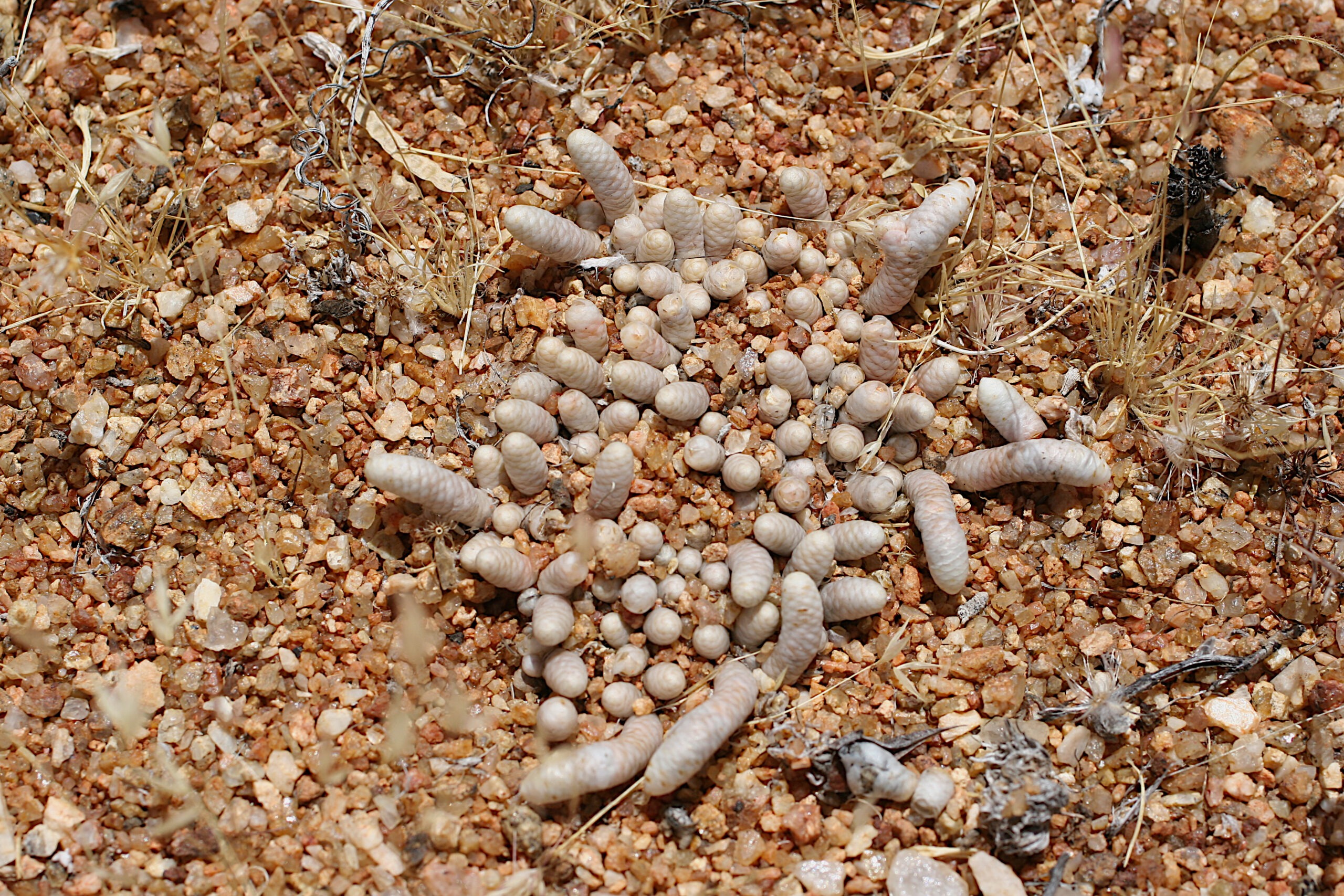
The former director of the Royal Botanic Gardens at Kew, Sir William T. Thiselton–Dyer, pointed out that the white stems bear a certain resemblance to bird droppings. It is not for nothing that the plant is also called ‘gansmis’ (goose dung) in South Africa. Probably the geese have a different menu there than in Europe, because here the droppings of geese are just as green as the grass they eat. Thiselton–Dyer suggested that this is a mimicry plant, which in this way tries to prevent it from being seen as a tasty snack. If that is the case, then it does not seem to be a successful imitation, because another name for the plant is ‘haasieskos’ (Hare food). The same name is also used for A. ustulata and A. filamentosa. Thiselton-Dyer made his remark in 1906 in an article in the British ‘Annals of Botany’. At that time, the flower was still completely unknown. In the same article he mentions that his friend Nicholas Edward Brown, also from Kew, had been growing the plant for many months, but despite daily observation had never seen a flower on it. Yet, suddenly a fruit appeared from between the parchment-like leaves. He concluded that the flower had to be very small and hidden under the scales had fertilized itself. A cleistogamous species, in other words. Later authors also maintain that the flowers do not open. But that’s not true. Sometimes the plant does bloom and the flowers are not small nor do they remain hidden under the scales (Fig. 4).
Thiselton-Dyer also reported in the article mentioned above that the stalk of the ripening fruit continues to grow so that the seeds are scattered at some distance from the mother plant. This can also be clearly seen in Fig. 4.
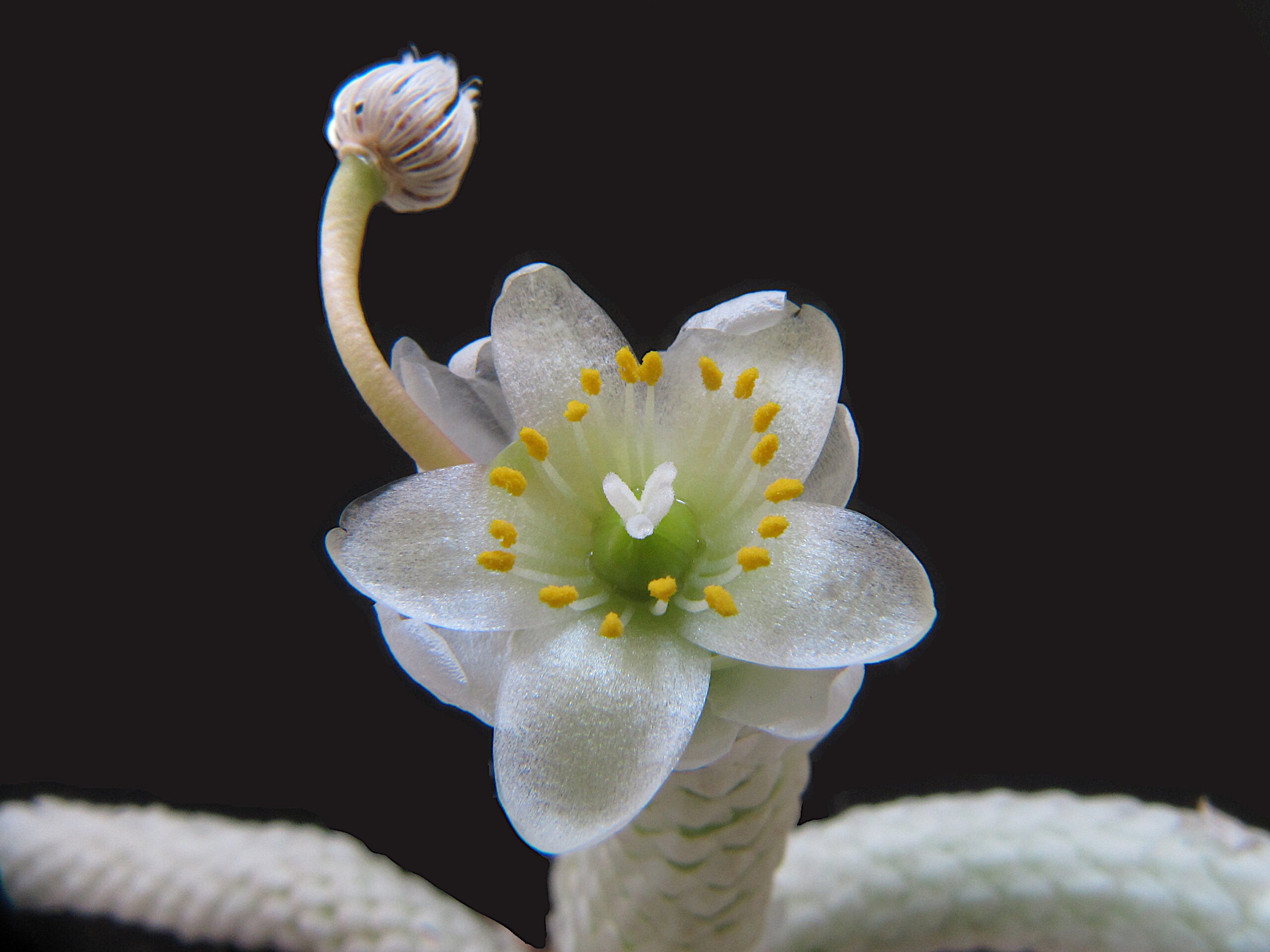
Fig. 4. The flower of A. papyracea and a seed pod.
However, this is not always the case. In Fig. 5 it can be seen that the 2 fruits hardly appear from between the scales.
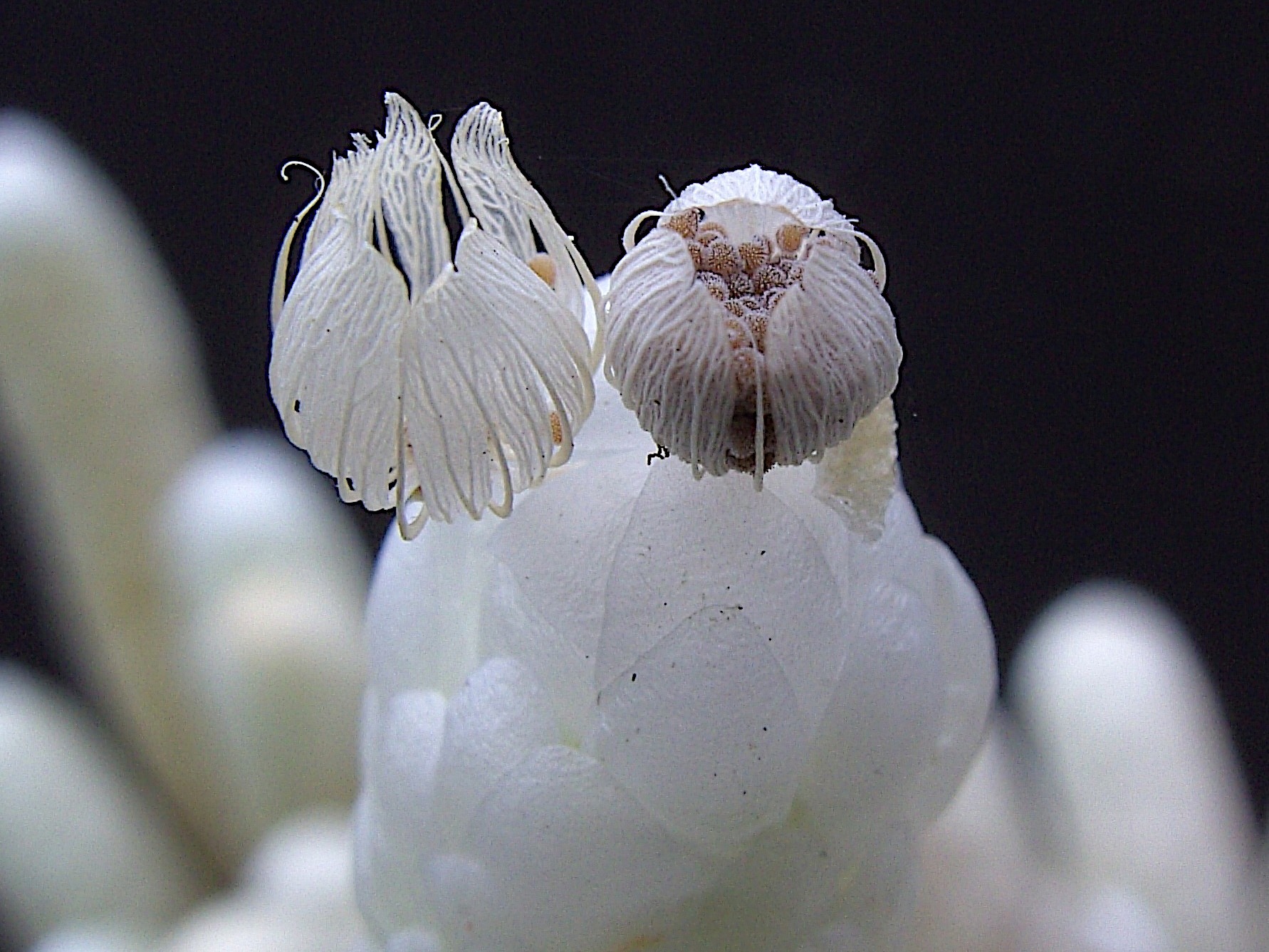
In addition to the usual species which is nowadays referred to as A. papyracea ssp. papyracea, there is also a subspecies: A. papyracea ssp. namaensis. This occurs in the northwestern part of South Africa and in the south of Namibia and is distinguished by the fact that the scales are not smooth-edged but serrated (saw-edged) or toothed and by the seeds that are lumpy. In ssp. papyracea they are more prickly (Fig. 6).
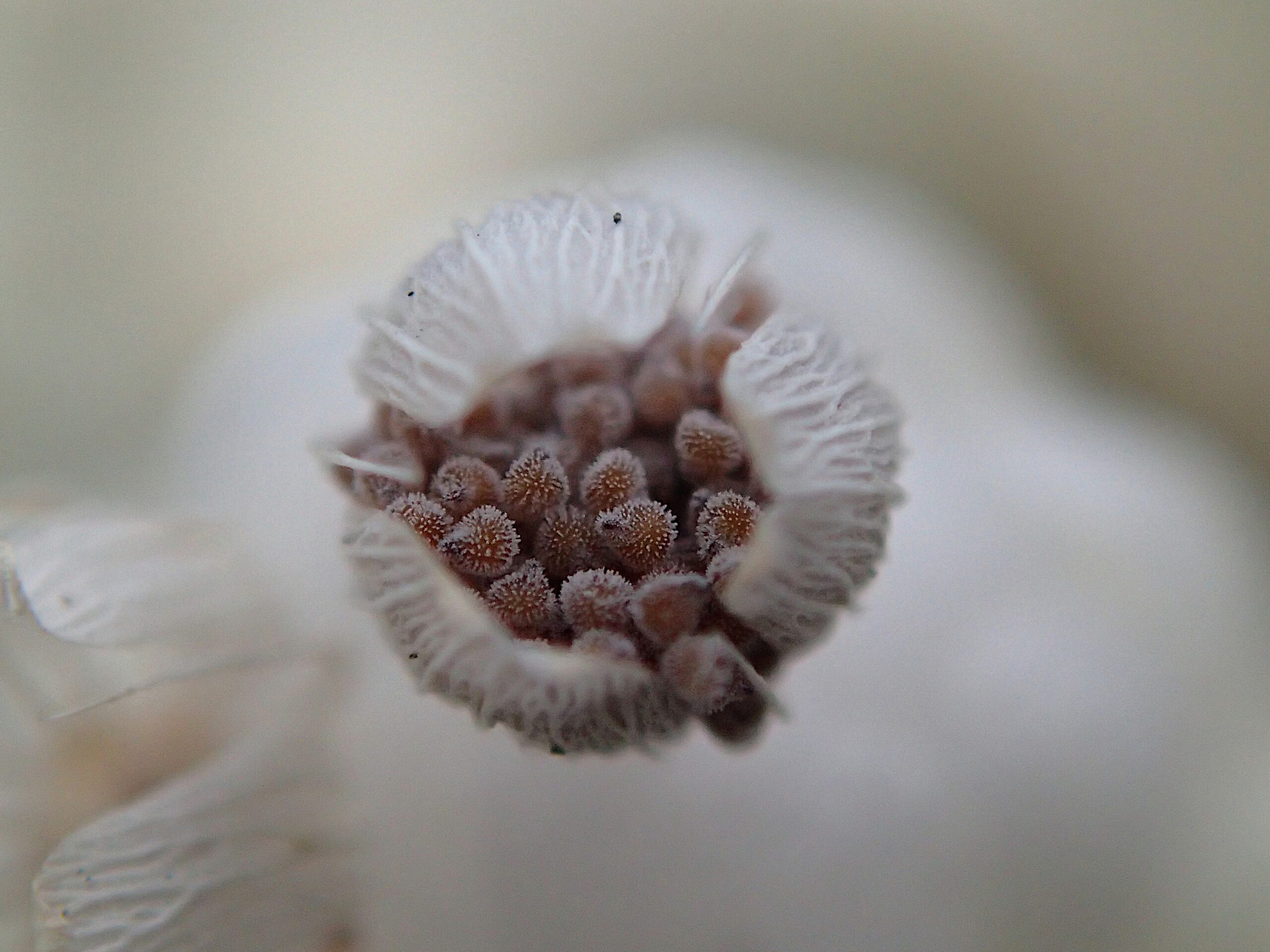 Fig. 6. The seeds of A. papyracea are slightly prickly.
Fig. 6. The seeds of A. papyracea are slightly prickly.
Seed collection is extremely simple. Holding an empty tube or something similar under a ripe fruit and a tap against the fruit are enough. Immediate sowing gives excellent results. At a temperature of 25 to 30 °C, the seedlings emerge en masse after a week. Only a short time later, the seedlings proceed to develop the papery scales (Fig. 7).
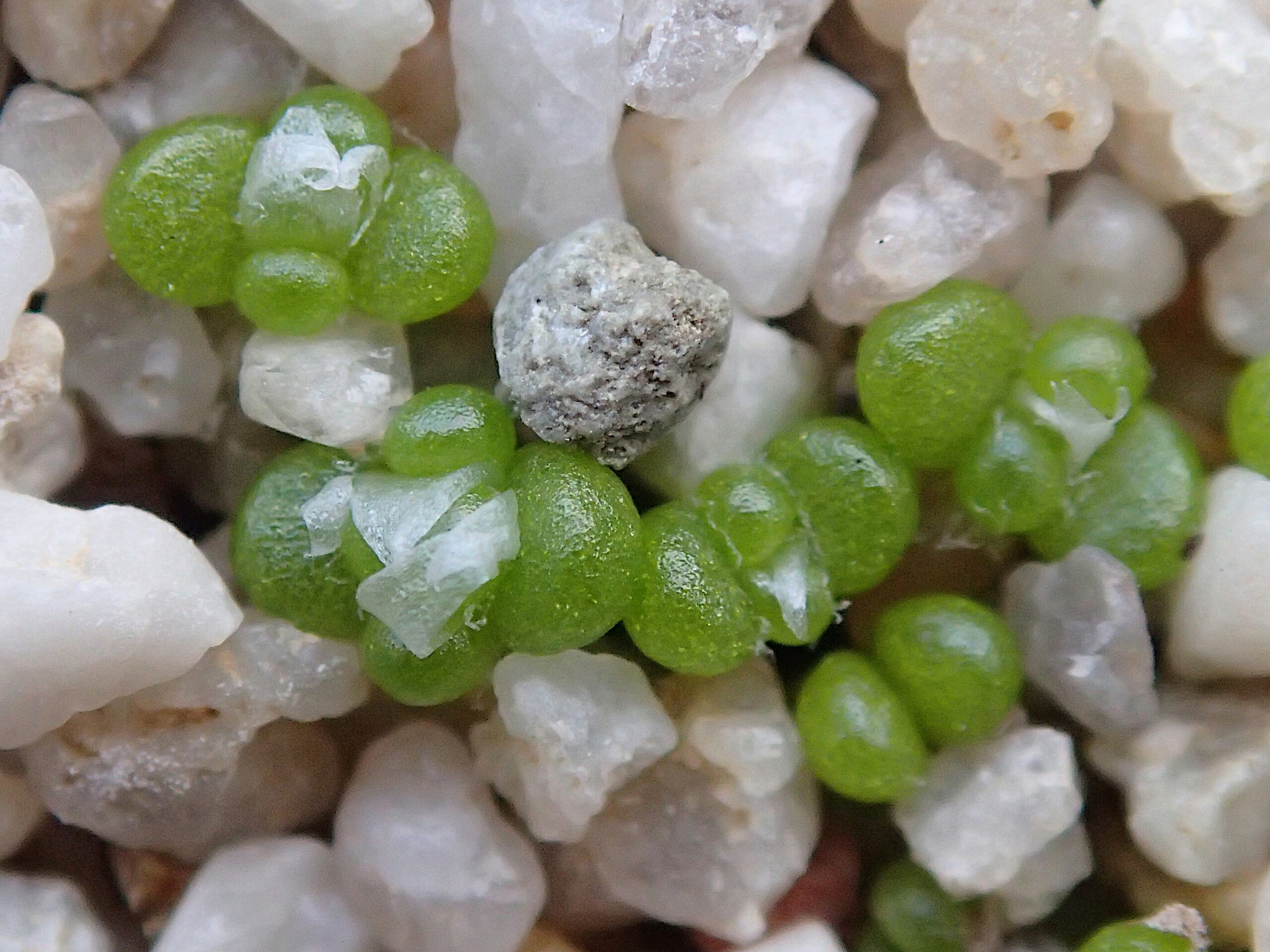 Fig. 7
Fig. 7
A year later they have become miniatures of the mature plants ( see fig 8).
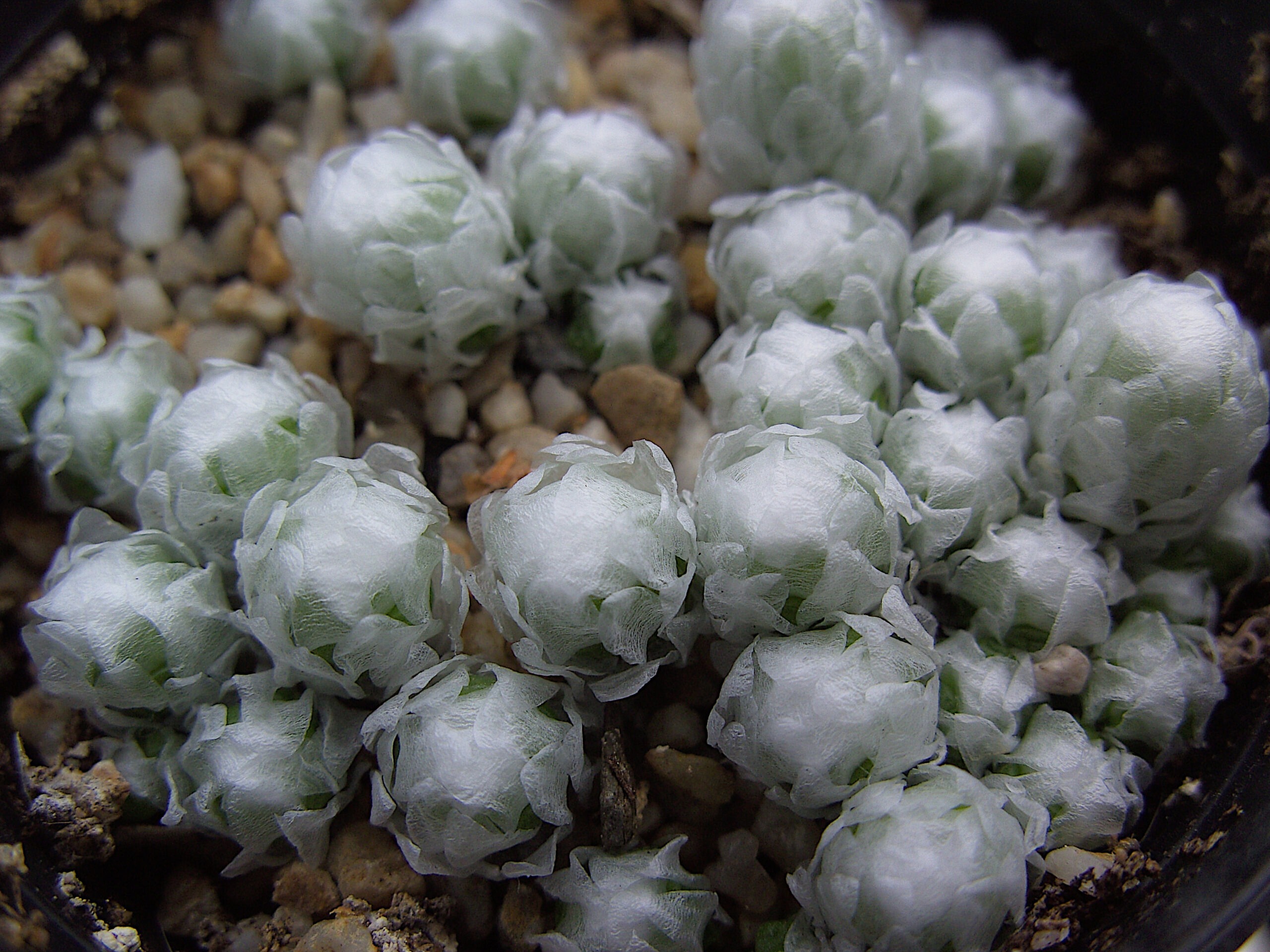
Cultivation
I grow the plants in standard cactus soil and I also treat them like cacti. This means that they receive water regularly in summer and that I keep them dry in winter. I try to keep the temperature in my greenhouse around 8 °C in winter, but it sometimes drops to just above freezing point. According to the literature, even temperatures of 5 degrees below zero are survived.
Apparently, A .papyracea, like A. ustulata, was also used in South Africa as a kind of yeast for baking bread and making beer. To this end, roots and stems are dried and ground. It is suspected that the plant also contains psychoactive substances, just as, by the way, A. quinaria. The brew must have been a kind of ‘spacebeer’.
Literature
Browne, P. (1756). The Civil and Natural History of Jamaica. In Three Parts [3]: 234
Fenzl, E. (1840). Monographie der Mollugeneen, Annalen des Wiener Museums der Naturgeschichte, [2]: 295
Marloth, R (1917). Dictionary of The Common Names of Plants, The Specialty Press of South Africa, Ltd. Cape Town
Rowley, G. (1994). Anacampseros and allied genera- A reassessment, Bradleya 12: 105-112
Sims, J. (1811) Anacampseros filamentosa, Curtis’s Botanical Magazine 33: plate 1367
Thiselton-Dyer, W.T.(1906). Morphological Notes, Annals of Botany 20 (2) blz 123-127
Originally published in Succulenta 93: 2014. Translated from Dutch by FN.
